Nothe Fort

Perched on the headland between Weymouth Bay and Portland Harbour, Nothe Fort is one of the most important historic military sites in Dorset. Built in the Victorian era and adapted across two world wars and the Cold War, the fort tells the story of Britain’s changing defences over more than a century. Today, it is a popular visitor attraction and a well-preserved example of 19th-century coastal engineering.
Click here to watch our video exploring Nothe Fort and discover its history.
- Region
- South West, England
- Period
- 19th Century
- Type
- Artillery Fort
- Condition
- Intact
- Ownership
- Local Authority
- Access
- Public - Admission Charge
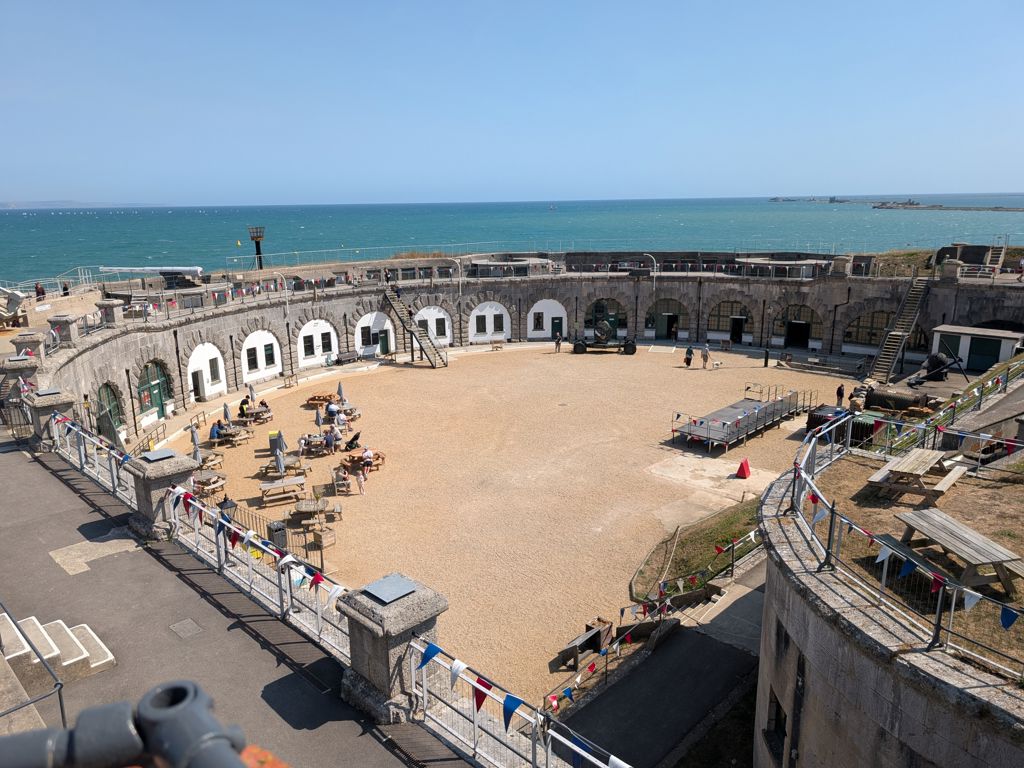
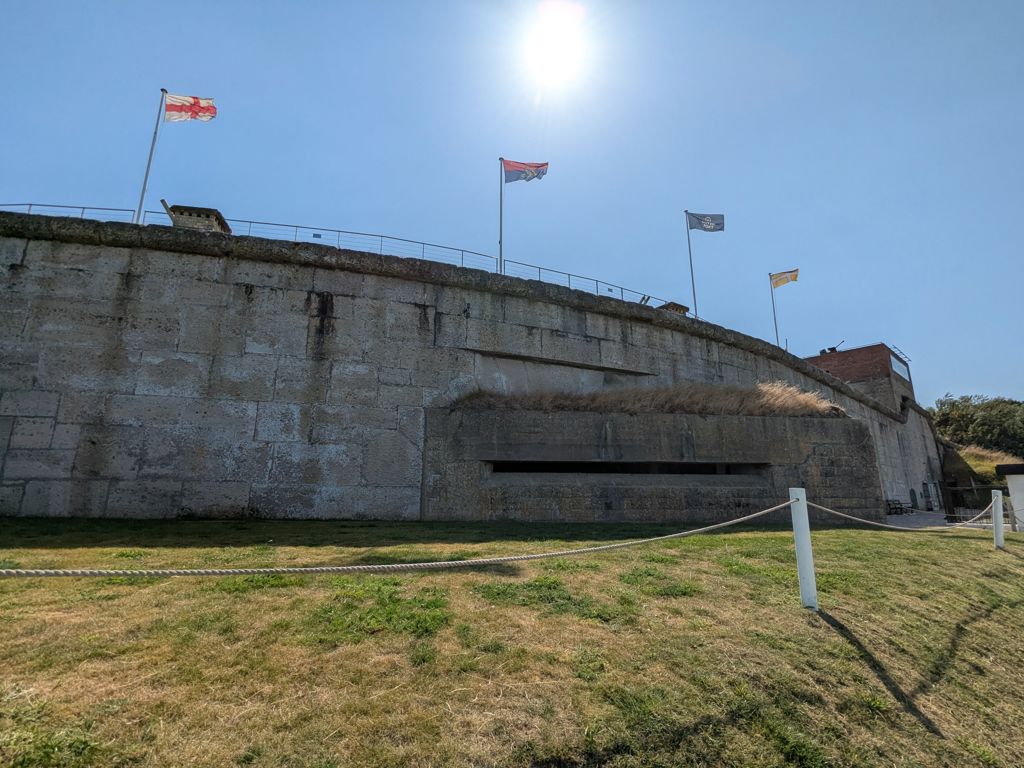
Victorian Construction
Nothe Fort was built in the 1860s, when Britain feared invasion from France under Napoleon III. It formed part of a nationwide programme of defences often known as Palmerston’s Follies. Completed in 1872, the fort was constructed from durable Portland stone in a triangular shape, with thick earth ramparts designed to absorb enemy fire.
Its strategic location on the Nothe Peninsula gave commanding views across both Weymouth Bay and Portland Harbour, one of the Royal Navy’s most valuable anchorages.
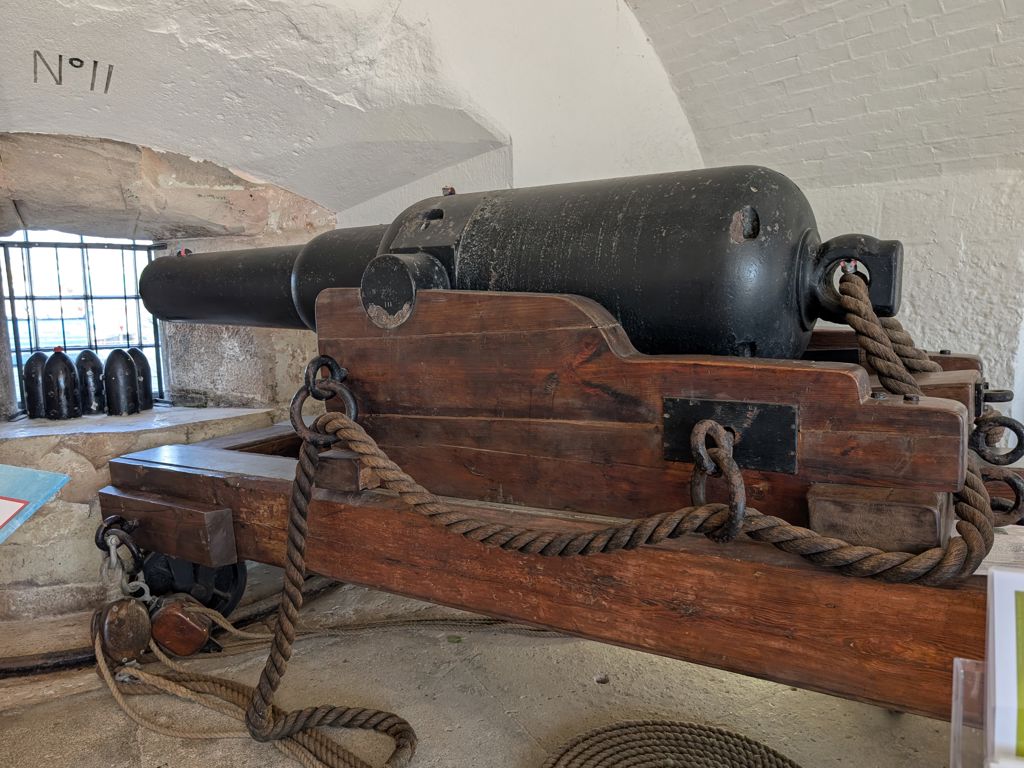
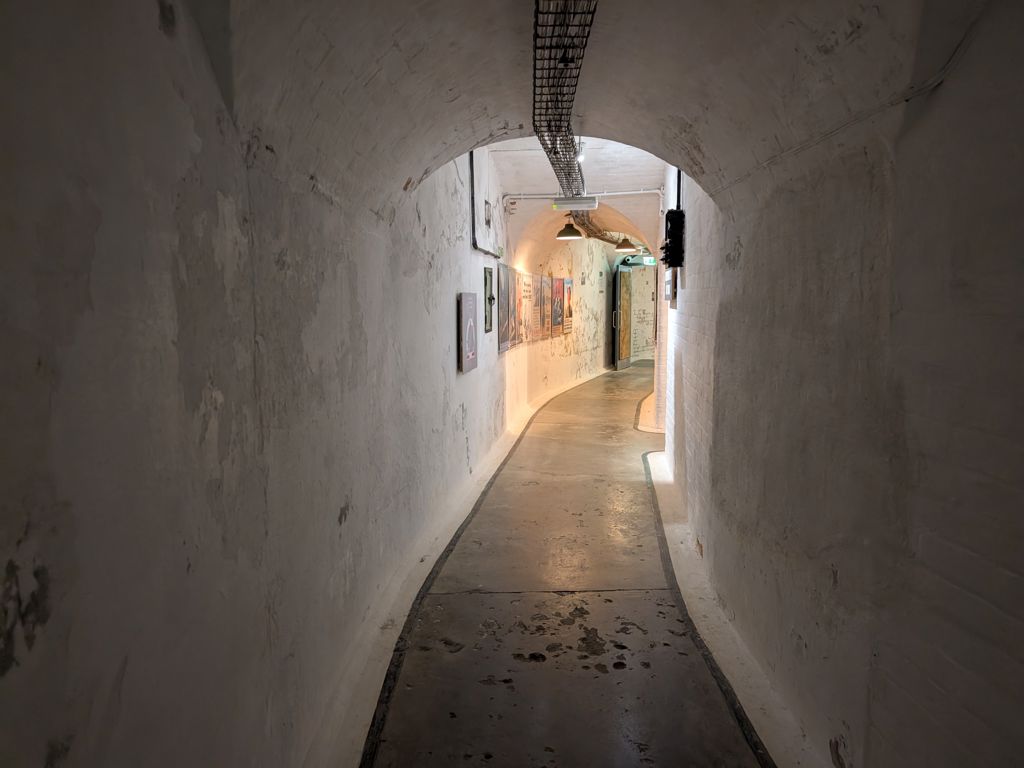
The First Soldiers and Guns
The first garrison at Nothe Fort was Number 2 Battery of the Royal Artillery, commanded by Captain Tatton-Brown. Their role was to install and operate the fort’s original armament, which included:
- Two 64-pounder rifled muzzle-loading (RML) guns
- Four 9-inch RML guns
- Six 10-inch RML guns
These weapons gave the fort formidable firepower for the late Victorian period.
In the 1890s, seven of these guns were replaced with massive 12.5-inch rifled muzzle-loading guns, among the largest of their kind. By the early 20th century, breech-loading technology had made muzzle-loaders obsolete. The fort’s armament was updated again, with three 6-inch Mark VII breech-loading naval guns mounted on the ramparts. Each could fire 100-pound shells, which were transported from underground magazines to the gun floors using a system of hoists.
At its peak, Nothe Fort could mount up to seventy guns, though not all were in use simultaneously. Beneath the surface, an extensive network of magazines and storerooms kept ammunition safe and dry, ready for use.
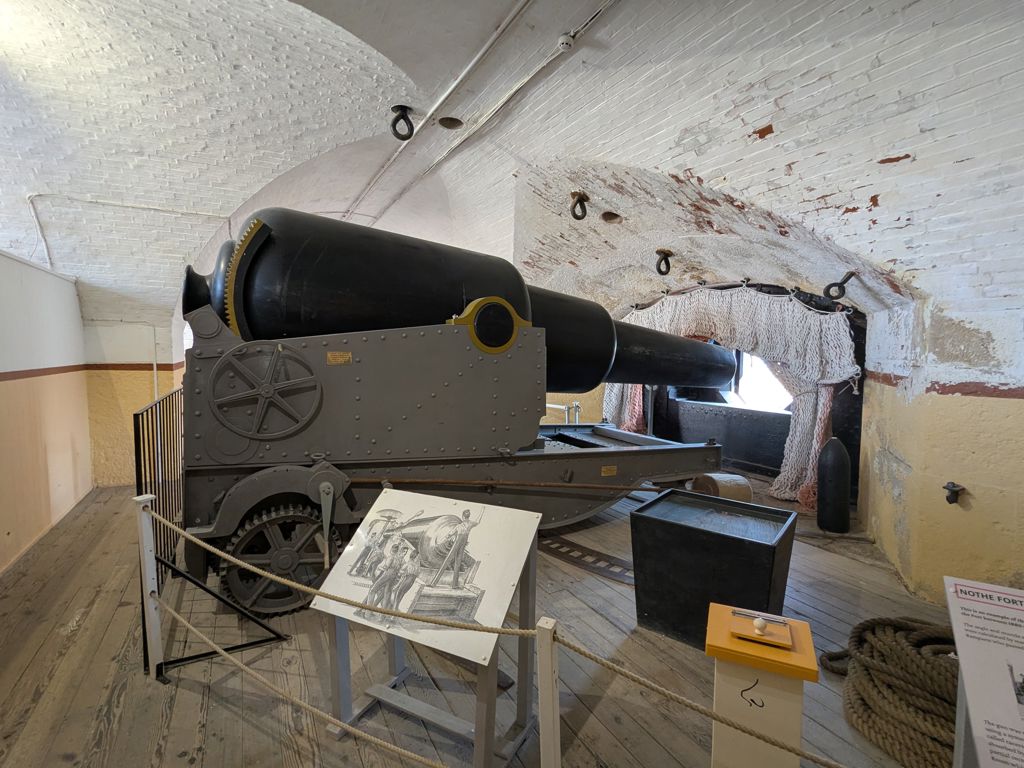
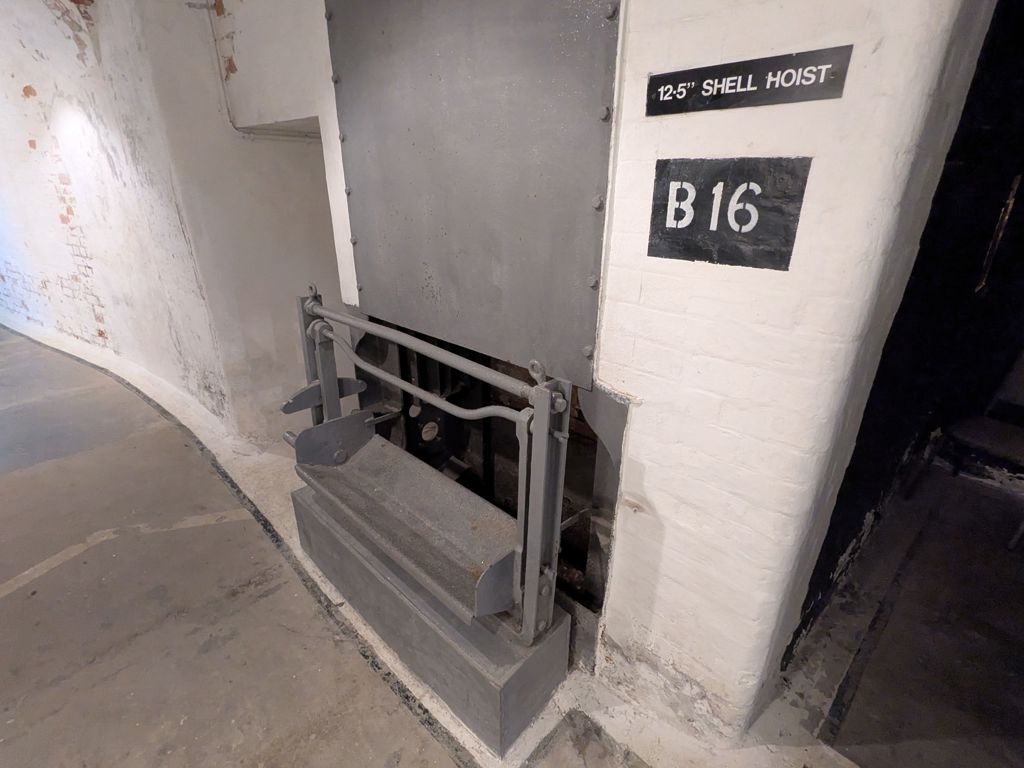
Nothe Fort in the World Wars
Although originally built to deter a French attack, Nothe Fort remained in military use into the 20th century.
First World War (1914–1918)
The fort saw limited action but remained part of coastal defence.
Second World War (1939–1945)
The site was modernised with anti-aircraft guns, searchlights, and observation posts. Portland Harbour became a vital Royal Navy base, and during 1944 it was a staging point for the D-Day landings in Normandy. Soldiers at Nothe Fort kept watch for enemy aircraft and submarines, protecting the harbour and its fleet.
Although the fort itself was never attacked directly, it played an important role in the defence of southern England.
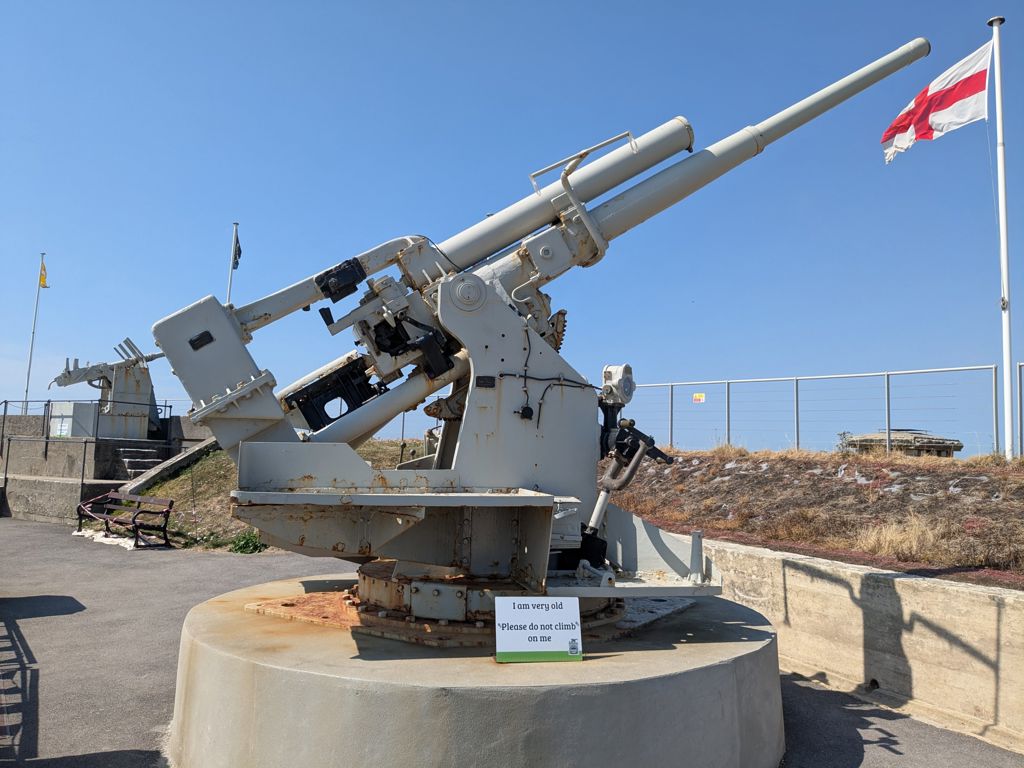
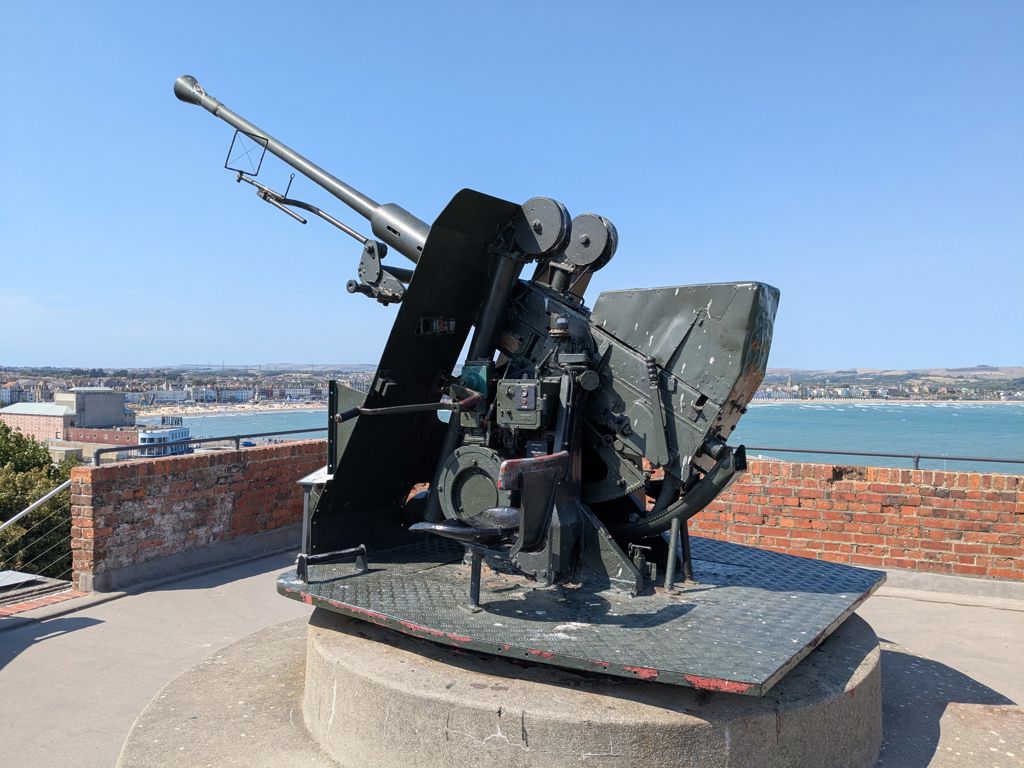
Decline and Council Purchase
After 1945, Nothe Fort was decommissioned. Its guns were removed, and the site fell into neglect. By the 1950s and 60s it was abandoned, overgrown, and at risk of demolition.
In 1961, the fort was saved when Weymouth and Melcombe Regis Borough Council purchased it from the Ministry of Defence. This decision preserved the structure for the future and prevented its loss.
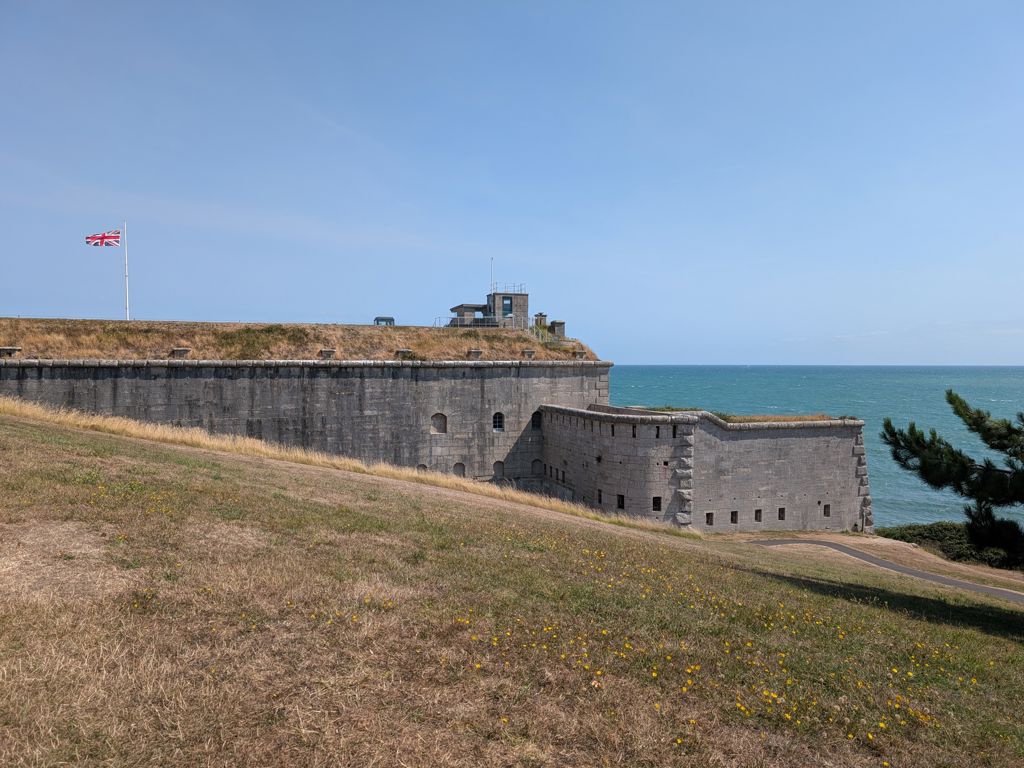
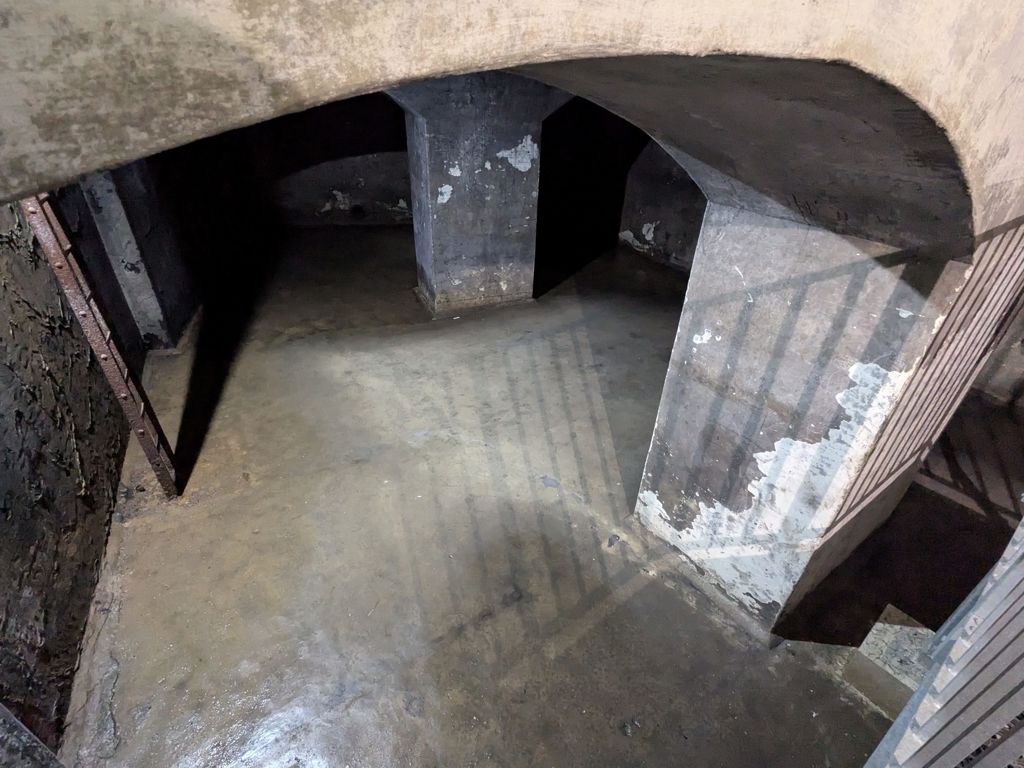
The Cold War Bunker
During the Cold War, part of Nothe Fort was converted into a nuclear bunker and civil defence centre. Reinforced rooms with communication equipment and planning spaces were created to serve as a command post if Britain came under nuclear attack.
Though these facilities were never used, they remain a fascinating reminder of how the fort was adapted to meet the threats of the atomic age.
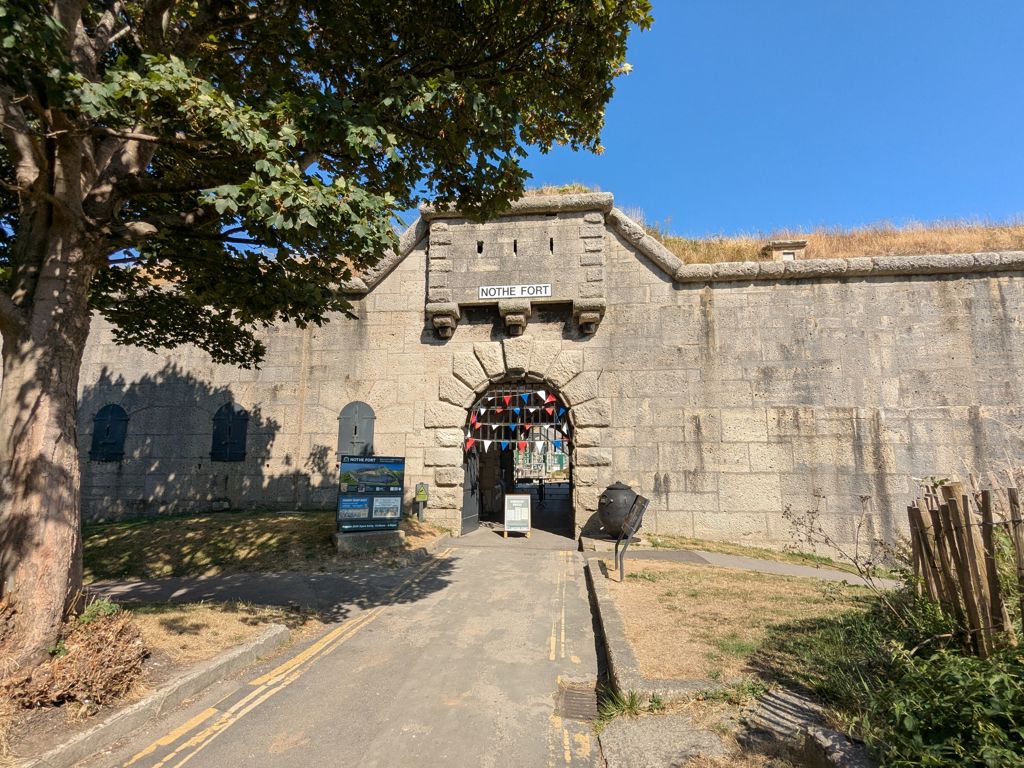
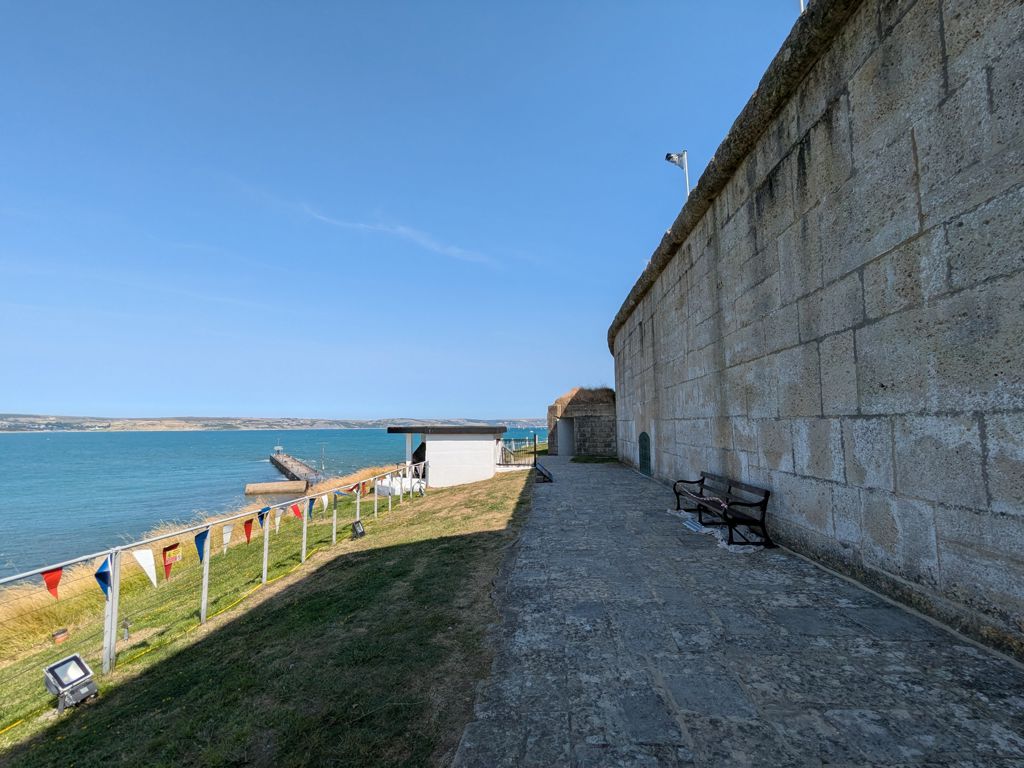
Restoration and Visitor Attraction
In 1980, the Weymouth Civic Society took over responsibility for the fort through a lease with the borough council. This marked the beginning of a major restoration effort, with the help of the Manpower Services Scheme. Volunteers and workers cleared overgrown areas, repaired crumbling stonework, and gradually brought the site back to life.
Later, the Friends of Nothe Fort continued this work, building exhibitions and transforming the fort into a heritage attraction. Visitors can now explore its ramparts, underground magazines, and displays covering Victorian coastal defence, the world wars, and the Cold War.
Ghost Stories at Nothe Fort
Nothe Fort is not only known for its military history — it has also gained a reputation as one of Dorset’s most haunted sites.
- The most famous legend is that of the Whistling Gunner, said to be the spirit of a soldier whose whistling is sometimes heard echoing through the tunnels.
- Visitors and staff have reported apparitions on the ramparts, including a pale figure seen pacing the walls at night.
- Some describe sudden cold spots, unexplained footsteps, or the feeling of being touched when no one is there.
Whether these tales are the product of imagination, or echoes of the soldiers who once lived and worked here, they add to the unique atmosphere of the fort.
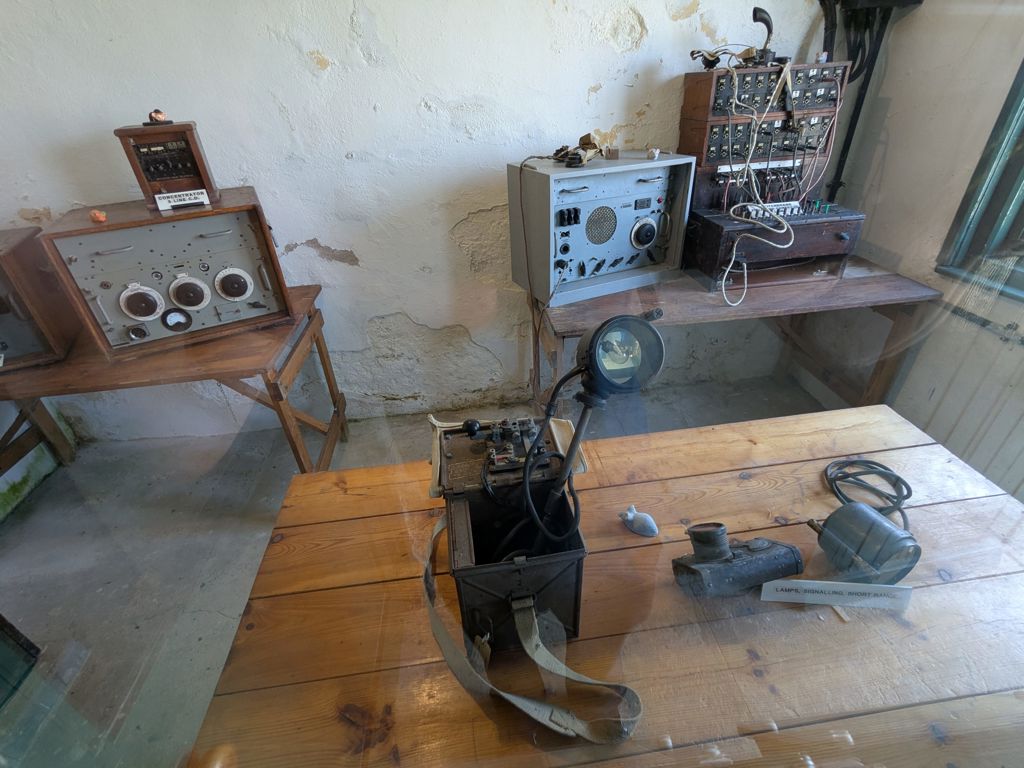
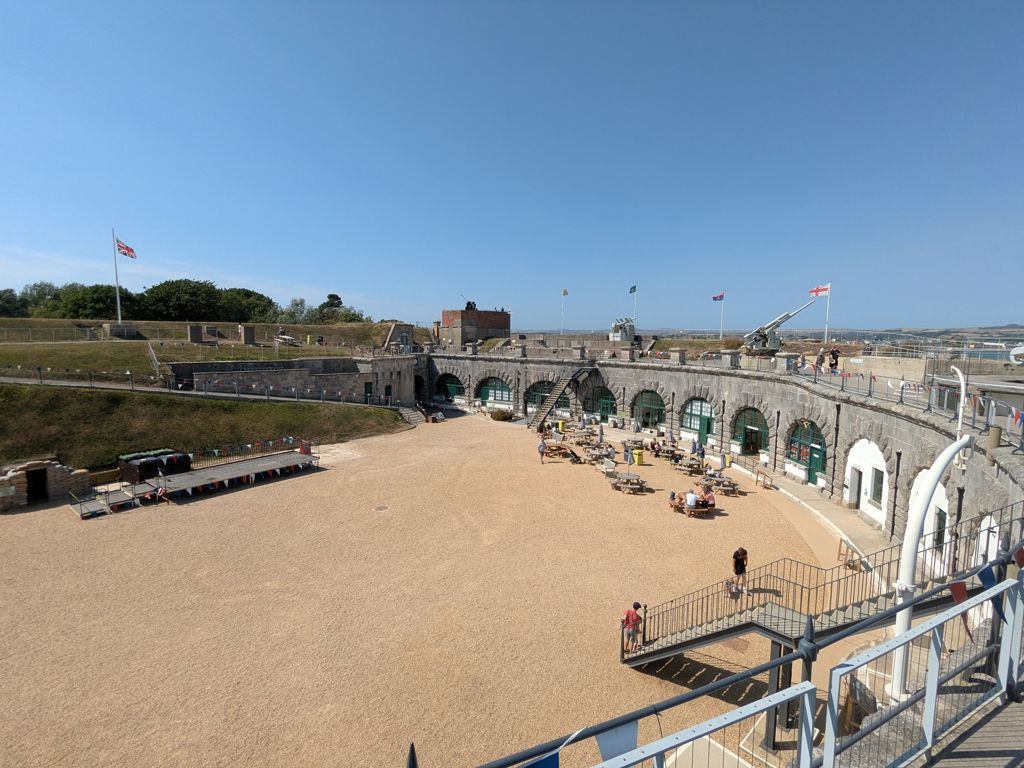
Impressions
From its Victorian beginnings to its role in the Second World War and its conversion during the Cold War, Nothe Fort has continually adapted to meet new threats. Thanks to careful restoration, it now stands as one of Dorset’s most important heritage sites.
Yet its history is not the only reason people visit. With its eerie legends and reputation for hauntings, Nothe Fort combines military history with mystery - making it one of the most intriguing attractions in Weymouth.
